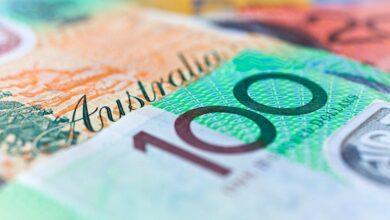UK CPI Preview: Inflation set to fall to 3.1% in March, the lowest since late 2021

- The March UK CPI report will be released by the Office for National Statistics on Wednesday.
- United Kingdom’s headline and core annual inflation are set to ease in March.
- The UK CPI report could hint at the BoE’s interest rate cut, rocking the Pound Sterling.
The highly-anticipated United Kingdom’s (UK) Consumer Price Index (CPI) data will be published by the Office for National Statistics (ONS) at 06:00 GMT on Wednesday.
Pound Sterling could witness a big reaction to the UK CPI inflation report, as the data could prompt the Bank of England (BoE) to signal an interest rate cut earlier than the market expectations.
What to expect from the next UK inflation report?
The headline annual UK Consumer Price Index is set to rise 3.1% in March, slower than a 3.4% increase in February. The reading would remain at its lowest since September 2021 but still higher than the BoE’s 2.0% target.
The core CPI inflation is seen easing to 4.1% YoY in March from 4.5% in February, also reaching the lowest level in more than two years. Meanwhile, the British monthly CPI rose 0.6% in the previous month.
A main factor that could contribute to easing inflation is weaker growth in food prices.
The latest monitor from the British Retail Consortium (BRC) trade body and the market research firm NielsenIQ showed earlier this month that food inflation fell to 3.7% from 5.0%. Meanwhile, the UK shop prices rose at an annual rate of 1.3% in March, down from a rate of 2.5% in February, registering the slowest pace since December 2021.
Helen Dickinson, the chief executive of the BRC, explained the reason behind the fall in food price inflation by saying that “while Easter treats were more expensive than in previous years due to high global cocoa and sugar prices, retailers provided cracking deals on popular chocolates, which led to price falls compared to the previous month.”
“Dairy prices also fell on the month as farm gate prices eased, and retailers worked hard to lower prices for many essentials. In non-food, prices of electricals, clothing and footwear fell as retailers increased promotions to entice consumer spending,” she added.
Furthermore, Average Earnings excluding Bonus, a measure of wage inflation, rose 6.0% 3M YoY in February, slowing from January’s 6.1% growth.
However, economists expect services inflation to remain elevated at 5.8% YoY even though slowing from a 6.1% increase in February. This could hold the Bank of England (BoE) from signaling a policy pivot. Markets are pricing in the first BoE full quarter-point rate reduction by September. Money markets now wager a 49 basis points (bps) of easing in 2024.
The BoE delivered a dovish hold at its March policy meeting after two of the Bank’s most ardent hawks dropped their demands for hikes. BoE Monetary Policy Committee (MPC) members Catherine Mann and Jonathan Haskel joined an 8-1 majority to keep rates at a 16-year high of 5.25%.
Previewing the UK inflation data, analysts at TD Securities (TDS) noted that “headline inflation likely continued to slightly undershoot the MPC’s forecast in March, though services should be in line at 5.8%.”
“Weak food and core goods inflation will exert further downside pressure on the print, while the early Easter adds some upside risk to services. Looking ahead, we continue to expect headline to be below target from April until the end of the year,” the TDS analysts said.
When will the UK Consumer Price Index report be released and how could it affect GBP/USD?
The UK docket will feature the CPI data on Wednesday at 06:00 GMT. The Pound Sterling is attempting a tepid recovery against the US Dollar heading into the inflation showdown. At the same time, the US Dollar Index consolidates near five-month highs, above 106.00.
A hotter-than-expected headline and core inflation data could help push back the market expectations of a September BoE rate cut, providing a fresh boost to the Pound Sterling rebound. In such a case, GBP/USD could see a sustained turnaround toward the 1.2600 level. On the other hand, GBP/USD could resume its downtrend toward 1.2375 if the UK CPI data show a notable cooling off in services inflation, suggesting that the BoE may not wait until September to announce a policy pivot.
Dhwani Mehta, Asian Session Lead Analyst at FXStreet, offers a brief technical outlook for the major and explains: “The GBP/USD pair closed below the static support of 1.2450 on Monday, reinforcing the bearish interests. The 14-day Relative Strength Index (RSI) stays vulnerable below the midline, near 32.0, suggesting that there is more room to the downside for the Pound Sterling.”
Dhwani adds: “A decisive break below the 1.2400 threshold could intensify the selling pressure, pushing GBP/USD toward the 1.2375 demand area. Around that level, the November 16 and 17 lows align. Further south, the 1.2300 round figure could be retested. On the other hand, any corrective upside will challenge the 1.2500 hurdle, above which a meaningful recovery toward the 200-day Simple Moving (SMA) at 1.2579 could be in the offing,” Dhwani adds.
Get Best News and Web Services here







